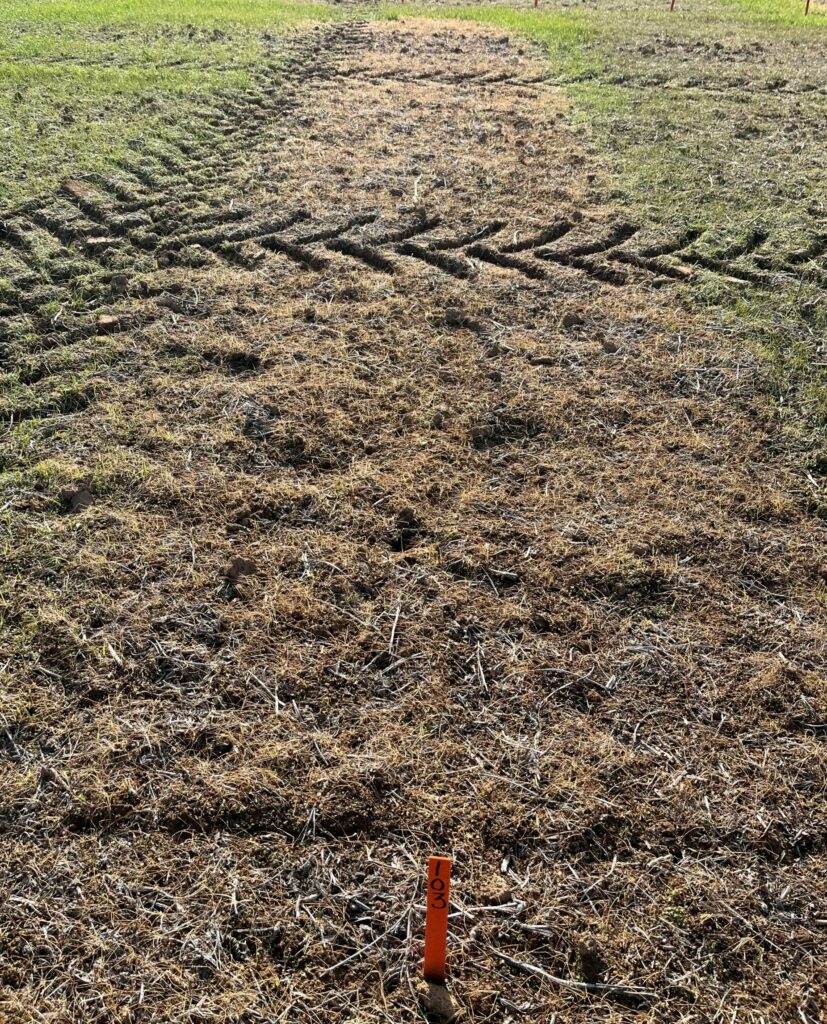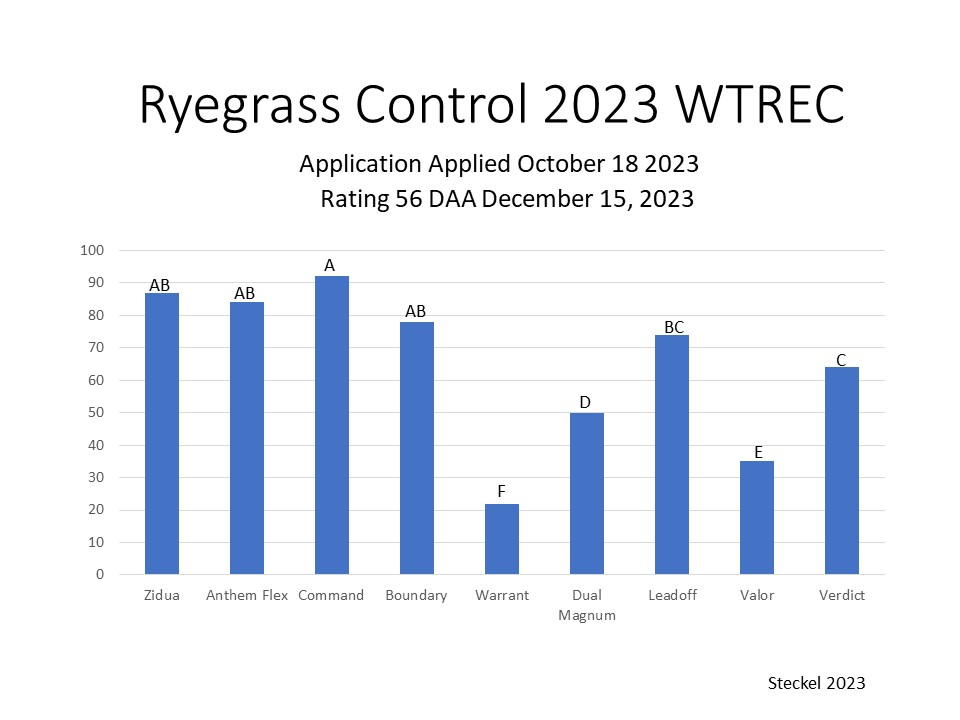
Ryegrass has become a serous weed issue in some fields the past couple of years. A major reason for this is that much of it is now glyphosate-resistant. Even if clethodim is used rather than glyphosate often it is applied on ryegrass sometime in late March through April when the grass is too well established to provide consistent control.
A tactic often used in Mississippi to manage ryegrass is a fall application of Dual Magnum, Boundary, an Anthem product or Zidua. The timing to consider starting that application recommended by my colleague Dr. Jason Bond at Mississippi State University is October 15. The window that this application can be effective is quite wide, from October 15 through December.
We conducted research this past fall examining October 18 application of a sundry of herbicides that can provide residual grass control. If you recall, last fall was very dry and as a result only herbicides that need little moisture to become activated worked well. They were the pyroxasulfone contain herbicides (Anthem Flex, Zidua), and Boundary where the metribuzin provided some grass control until enough rain occurred to activate the Dual Magnum. Command was the exception as ryegrass control was very poor for the first couple weeks but after a rain the herbicide provided better than 90% control (Picture above) (Figure 1).


